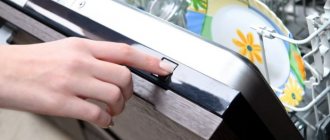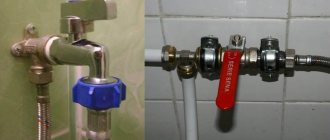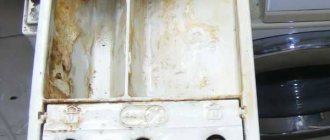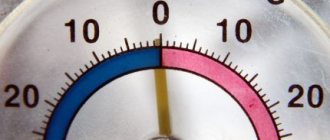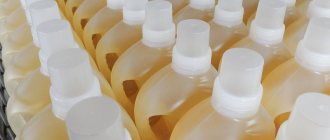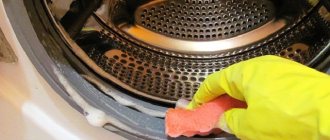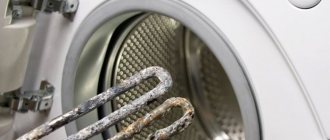Few people think about the question of how much powder to pour into the washing machine, but in vain. If you incorrectly calculate the volume of product, you can end up not only with dirty laundry, but also with a damaged washing machine. There are a number of aspects that need to be taken into account when calculating detergent.
- How much washing powder to use
- Amount of powder per cycle
- Hardness of water
- Degree of pollution
- Number of items loaded into the drum
- Water consumption per cycle
- Liquid proportions
How much washing powder to use
As a rule, information about the amount of household detergent is indicated on its packaging. This data can be relied upon in some cases, but a standard wash requires much less powder. The reason why manufacturers provide incorrect data is simple - any business is interested in increasing sales.
Expert opinion
Irina. Housewife.
Ask a Question
In this way, popular brands not only help themselves, but also provide a huge service to the creators of household appliances. After all, excess detergent can harm the washing machine.
Determining the amount of powder for washing
Excess washing powder leads to the following consequences:
- blurry white marks on clothes, this looks especially unpleasant on dark fabrics;
- Detergent compartment is broken. During washing, not all the powder is washed out of the tray, which leads to sticking of wet substances, rust and mold;
- unpleasant chemical smell from the machine or laundry;
- drain filter clogged.
Are you unplugging your washing machine?
Oh yes! No
In order to extend the life of your washing machine, you need to adhere to the following general rules:
- To determine the maximum filling level of the tray, you need to pay attention to its markings. You need to understand that it does not take into account the degree of workload and the quality of the water, so the markings can only serve as a guide for determining the maximum detergent.
- When choosing a new powder, you should pay attention to how it is used. Hand wash detergent contains a higher proportion of substances that promote the formation of abundant foam. This feature negatively affects machine washability. The fact is that excess foam can settle on the working parts of the equipment, accelerating its wear.
- You should pay attention to the composition of the detergent. Ingredients such as chlorine and solvents must be avoided as they have a negative effect on the rubber elements of the SMA.
Pour washing powder into the tray
Where to pour dry powder in an automatic machine
The powder receptacle is usually divided into three compartments. The smallest one has a star or a flower on it - this is a compartment for conditioner or rinse aid. The remaining two compartments are marked I and II, less often - A and B. The first compartment - A or I - is filled with powder only in a mode that includes pre-washing. Where does the main wash detergent go? That's right - to department II or B.
Important! If you bought a used machine, the markings on it are erased, and you don’t know which cells to pour or pour the product into, turn on the quick wash and run the cycle. You will immediately identify the main compartment - water will flow into it.
Do you know if it is possible to pour washing powder into the drum? This is not necessary - send it to the powder receptacle. Pour thick liquid washing gel into the drum along with the laundry - this will protect the pipes and the cuvette from blockages.
Follow our recommendations, and washing will be a pleasure, not a worry.
Hardness of water
The developers have determined that water quality has a great influence on the outcome of the wash. In soft stains, like any other contaminants, they are washed off much better, so manufacturers began to add softeners, also called phosphates, to their detergents.
Despite many disputes about their effect on human health, we can say with confidence that in the case of washing equipment they have a positive effect. These salts protect the working parts of the machine from scale, which is especially important when using high temperatures.
Expert opinion
Irina. Housewife.
Ask a Question
As an alternative to chemical softeners, you can use baking soda. You need to add a few tablespoons of the product to the tray with the powder. The only limitation is that baking soda should not be used for wool and silk materials.
At home, hardness can be determined in 2 ways:
- Pour water into a basin and add powder. Foaming can determine the quality of a liquid. If the product does not foam, this indicates increased hardness; if it appears, use soft water.
- Due to scale on the tubular heater of the kettle. In the case of hard water, plaque forms after a month of use, but with soft water, this unpleasant phenomenon occurs no more than once in 6 months.
Measuring the volume of washing powder
Washing technology
When determining the powder dosage, take into account the type of wash. Modern equipment is equipped with innovative technologies that allow you to save powder without compromising the result.
Dry washing involves treating items with steam. The powder is completely dissolved beforehand, so the possibility of soap stains is eliminated. Steam treatment allows you to remove even old and stubborn stains. This eliminates the need to wash and soak items. In addition, such washing significantly saves powder consumption, so much less powder should be added.
EcoBubble technology involves preliminary dissolution of the powder in a foam generator under the influence of supplied bubbles. In this case, washing is performed with a homogeneous soap solution without a single particle of detergent.
Modern technologies - steam treatment and EcoBubble - allow you to save detergent consumption without compromising the quality of washing
When using washing powder, few people worry about how much to put in. You should not pour it intuitively “by eye” or rely on the manufacturer’s recommendations. When choosing a dosage, take into account all the main factors affecting the consumption of detergent.
Degree of pollution
The condition of the laundry loaded into the machine drum is also of great importance when choosing powder volumes. Here you need to be guided by the following rules:
- If there are stubborn and old stains on the fabric, do not rely on powder, but use bleach or soak the item before washing.
- To give specialized work clothes the proper appearance, use the amount of cleaning agent specified by the manufacturers. As a rule, it is 150-225 gr.
- If hard water is used, it is recommended to increase the volume of powder by 20 g.
The ratio of bulk and liquid detergents
In household chemical stores you can find a huge number of different powders: in capsules, tablets, bulk and liquid. Due to such variety, there are often doubts about how much powder and how much liquid products should be poured into the machine. According to the recommendations, the product should be measured with a measuring spoon or a simple dining spoon. Capsules and tablets are placed in the machine in pieces.
The amount of liquid products depends on the hardness of the water. Experts recommend placing no more than a spoonful of gel product in the washing machine. If the water is hard, then several times more product must be added. There is no point in adding gel anymore, since it won’t make washing any better, and the consumption of detergent will increase.
The quality of washing things in the machine depends on the concentration of the washing powder. It is recommended to achieve this not by increasing the powder, but by decreasing the amount of water. Detergents in the form of capsules are designed for washing with one capsule.
Number of items loaded into the drum
As a rule, the packaging indicates the calculation standards for synthetic detergent per 1 kg of laundry. But as mentioned above, it is not recommended to rely entirely on this information, since in this way manufacturers pursue their commercial goals. The only thing that should be mentioned is that you should not exceed the maximum mark specified by the manufacturer.
As for the optimal consumption of detergent, research has shown that only 1 tbsp is required per 1 kg of dry laundry. l. (25 g) powder.
Calculations of the volume of synthetic detergent are as follows:
- for an automatic washing machine with a maximum load of 3 kg, you need to use 75 g. powder;
- for 4 kg of clothes you need to sprinkle 100 grams. detergent;
- 5 kg of laundry will help wash 125 grams. powder;
- for SMA with a load of 6 kg, the norm is 150 g;
- for large washing machines of 7 and 8 kg - 175 and 200 g. respectively.
We measure the norm
Factors affecting powder consumption
By choosing the right dosage of the product, you can achieve ideal cleanliness and freshness of things. The volume of powder depends on several factors that should be taken into account when selecting the dosage.
Hardness of water
First of all, you need to pay attention to the hardness of the water. Hardness can be determined using special test strips. In soft water it is easier to wash clothes, and a little powder is wasted. In hard water you need to add 20 grams more product. Also, to protect the machine from damage, you need to use a softener or mix the powder with soda.
Foaming
You can determine hardness using a bar of laundry soap. Try making foam from laundry soap. If foam is difficult to form, it means the water is hard.
By scale
Look at the coil of your electric kettle. If there is a lot of scale on it, this indicates that the water has high hardness. When heated, salts contained in large quantities in hard water are deposited on the spiral, which explains the appearance of scale.
See also
Reasons and what to do if laundry smells musty after washing
Degree of pollution
In order to refresh laundry, you will need about 160 grams of product (if the drum is fully loaded). To remove stains and heavy dirt, you will need about 210 grams of powder.
Dependence of consumption rate on weight
The dependence of the volume of powder on the mass of things loaded into the machine can be expressed as a list:
- 1 kg – 25 grams of powder;
- 5 kg – 75 grams;
- 4 kg – 100 grams;
- 5 kg – 140 grams;
- 6 kg – 175 grams;
- 7 kg – 210 grams.
Amount of water consumed per cycle
The quality of washing directly depends on the selected dosage of powder. However, if you pour too much product into the machine, it will not bring the desired result. On the contrary, light stains may appear on things. The amount of water that a washing machine consumes per cycle depends on the brand of the device.
In addition, the volume of water consumed depends on the mode in which the machine operates and the capacity of the tank.
A regular washing machine, holding 5-7 kilograms of clothes, consumes approximately 60 liters of water per cycle.
If the product is concentrated
When selecting the dosage of the powder, you need to take into account its type. For example, if 1 kilogram of clothes requires 25 grams of standard detergent, then 6 kilograms of laundry require only 50 grams of concentrated powder.
When increasing the quantity won't help
A large amount of powder will not help remove those stains that only a stain remover can handle. Also, if you use too much detergent, the machine tray may become clogged.
Water consumption per cycle
Water consumption affects the final washing result, since depending on the selected mode, the concentration of the substance may vary.
The consumption calculations included in the machine program do not take into account the number of items. For example, if you load 3 kg of laundry into a standard washing machine weighing 6 kg, it will consume 60 liters of water, but even with a load of 6 kg, the liquid consumption will be equal to 60 liters. If you add 3 tbsp. l. powder, you may be mistaken, since the resulting foam will not be enough to effectively get rid of dirt.
How to measure using improvised means
Some manufacturers of washing machines equip them with a measuring spoon. However, if you lost a spoon or it simply wasn’t in the machine, you will have to use improvised means. Regular cutlery will do.
See also
How to quickly bleach a bra at home, effective remedies and folk recipes
A heaped tablespoon holds 25 grams of detergent, a teaspoon holds 5 grams. When filling the washing machine with dry items, take into account their weight, since for every kilogram of items 1 tablespoon of standard detergent or 1 teaspoon of concentrated powder is spent.
Caring for the washing machine cuvette
In order for the powder receptacle to work properly for a long time, it is necessary to follow a number of recommendations.
After each wash, it is necessary to remove all remnants of washing products (rinse aid, powder), as well as excess moisture, and then dry the cuvette, leaving it open
Periodically, air conditioning must be added to the compartment. After soaking, the cuvette is removed from the niche and then thoroughly washed with a brush.
At the same time, the walls of the hole are also cleaned, where dust and accidentally spilled powder often accumulate.
The load level of the washing machine at a certain washing mode and drum volume
Models of washing machines presented on the Russian market have different load volumes of laundry. Among the population, the most popular ones are 5-7 kg. Typically, the manufacturer in the instructions for each washing mode indicates information about water consumption and maximum load in kilograms.
As noted earlier, 25 grams of cleaning agent are needed per 1 kg. But there is a small peculiarity here. If the drum is not fully loaded, the water consumption does not decrease. Consequently, the concentration of powder in water will become less if you add it, focusing only on the weight of the laundry. This may lead to poor wash quality.
Sometimes housewives are faced with the question of whether it is worth adding powder directly to the drum. Let's look at this question in detail.
This measure is forced: it has to be resorted to if the detergent tray is damaged.
Do not add aggressive products (stain removers, bleaches) to the drum, as they can stain the fabric or even destroy the material. It is also not recommended to add powder containing multi-colored granules directly to the laundry, as they can leave marks.
There are different opinions about adding detergent directly to laundry.
Supporters note the following positive aspects:
- In this case, the amount of detergent can be reduced since it comes into contact with the clothes.
- This method increases the service life of the machine and also relieves the user of caring for the tray, which is one of the most problematic components of washing units.
- If powder particles get through the ditch, they can stick to the inner walls and then get onto the laundry when rinsing. This does not happen when you put it in the drum, so things are rinsed faster and better.
At the same time, there are a significant number of disadvantages:
- In the compartment, the powder is washed out with water, entering the drum already partially dissolved. When adding the product directly to the laundry, it will take much longer to dissolve.
- Washing powder granules that fall on dark-colored items may leave light marks.
- If the product is poured onto the wall of the drum, then at start, part of it will be pumped out by the pump along with the water remaining in the tank from previous washes.
- Some wash programs that require batch use of detergent will not be available if detergent is added to the drum.
- There is no point in adding powder to the drum when planning a pre-wash or soak. Such modes involve draining the water after passing the initial stage; Along with the liquid, the detergent dissolved in it will also leave, which will not wait until the main stage of the cycle.
- It is also not possible to use this method to add conditioner or other rinse aid, which should only be added at the final stage of the process.
At the same time, this method will not solve the problem of using conditioners or other rinses.
At the same time, there are a number of modern products that, according to the advice of manufacturers, must be introduced into the drum.
Such substances include:
- Powders made from soap. These substances have a coarse granular structure, which can clog the hole in the cuvette, which can lead to leakage and flooding of neighbors.
- Phosphate-free powders, as well as products for the production of which plant extracts are used.
- Powders for washing children's clothes: pouring into the drum makes it easier to rinse clothes.
- Modern varieties of detergents, available in the form of gels, capsules, and compressed cubes, are intended for loading into the drum.
Gel and liquid detergents are not recommended for use at high water temperatures, so when using them you should choose modes that provide a maximum heating of 60 °C
If for some reason gels need to be added to the tray, it is recommended to first dilute them with water. The capsules were specially designed for use in a drum; other options for their use are not provided.
All these products can be added to the drum in different ways:
- pre-dilute with water;
- pour directly onto laundry;
- place in a special bag (this option is especially recommended for powder based on plant raw materials).
Sometimes housewives have to deal with situations where it is not possible to determine the purpose of the tray compartment (faded markings and the inability to check the instructions). In this case, it is quite possible to recover the information experimentally.
Advice from professionals
Leading manufacturers have solved the dosage problem by creating a new generation of washing machines with the i-Dos system, which accurately calculates the required amount of powder or gel.
Such units are determined using built-in sensors:
- volume of laundry;
- fabric type;
- degree of pollution;
- hardness of water.
They automatically calculate the dosage of liquid detergent and fabric conditioner, which saves time, effort, reduces the consumption of water and powder, which will have a positive effect on the family budget.
A lot of useful and important information about washing powder is presented in this section of the site.
Consumption when choosing a washing program
To avoid leaving streaks on the fabric, it is important to add not a lot of powder, but to take into account the weight of the loaded laundry, temperature, water hardness and washing duration.
Table 1. Parameters for using detergents for manual and automated washing.
| Wash | Duration of laundry processing | Temperature of water used (°C) | Powder consumption per 1 kg of laundry in grams (with automated washing with known water hardness) | ||
| Soft | Average | Tough | |||
| Pre-soak | 15 minutes | Up to 25 | 10 | 15 | 20 |
| Machine | According to the manufacturer's instructions and taking into account the hardness indicators | 40 | 15 | 20 | 25 |
| Manual | – | Up to 40 | 20 | 25 | 30 |
Using these parameters will help improve washing in any program.
But do not forget to clean the internal elements with “White” or citric acid to rid the machine of scale.
With soft water, run an empty washing machine at the highest water temperature (for 2-3 hours) once every six months, and with hard water - monthly. Such care will ensure timely washing of pipes, cuffs, heating elements, and remove plaque and pathogens.
Markup in a container
Most washing machines, regardless of the manufacturer, have a mark in the container to guide the powder being poured. But it is not recommended to add detergent based only on the mark on the compartment. The volume of the product is determined by the amount of soiled laundry and the volume of water used for washing. Do not forget that laundry detergents also come in regular and concentrated forms, so they are used in different quantities.
Important! The mark on the container serves as a guideline for limiting the amount of powder used to ensure proper operation of the equipment.
You may also be interested in various recipes based on natural and safe products that you can use to make fabric softener yourself.
What determines the amount of powder when washing?
For high-quality washing and the safety of the washing machine, it is important to select not only the right temperature and the right mode, but also to know how much washing powder to put in. This will extend the life of the machine, maintain the quality of the clothes and at the same time remove stains of various origins. The required amount of product for 1 wash is calculated based on various factors.
Age and number of spots
Old stubborn stains will not be removed even if the dosage is exceeded.
Contamination ingrained into fabric
They can only be removed with stain remover or bleach with a normal amount of liquid or dry powder.
Water quality
Soft water promotes improved stain removal, so it is not necessary to exceed the dosage specified by the manufacturer. It is enough to purchase a product with a softener.
Volume of laundry washed
Don't put too much laundry in the machine
A large volume of dissolved powder provokes increased foaming, which is harmful to the machine.
Washing type and material
Some fabrics are sensitive to powders, so after processing, streaks may remain. Do not use dry products when washing quickly in cold water, as the granules do not have time to dissolve and are deposited on the internal elements.
Type of detergent
There are 2 types of powders - regular and concentrates.
Concentrated powders
The second type is consumed in a reduced dosage and is harmful when the norm is exceeded.
How many capsules should I use?
Capsule manufacturers have simplified the task for housewives; the product does not require dosage . The soluble casing was filled with the amount of concentrate needed for one wash, provided the drum was fully loaded.
Just place the capsule on the bottom of the drum, load the laundry, select a mode and press the start button. If the degree of soiling of the laundry is high, a double dose may be used.
Tablets and washing plates, which are used similarly to capsules, do not require calculations.
How many detergents do innovative programs require?
New-style machines, in addition to the standard programs “Six”, “Delicate Wash”, “Hand Wash”, etc., are washed using steam or the “Eco Bubble” function. Let's consider how much powder to put in when using these functions.
Steam wash
Injecting steam into the drum provides enhanced stain removal (at the temperature you choose) and disinfects.
Machine washable with steam
The program does not have any washing features, so put the amount of powder written in the table above into your new automatic washing machine.
Eco Bubble Technology
The program eliminates the appearance of streaks and reduces the amount of powder used.
Eco Bubble washing technology
It works by pre-dissolving the granules, turning them into bubbles that are supplied to clothes in a ready-made form. For complete washing in this mode, it is enough to use 50% of the powder from the norm specified by the manufacturer.
Instructions from the manufacturer
Before purchasing a powder, study its composition. Use some products in reduced quantities or don’t buy them at all.
Detergent for hand washing foams heavily, damaging the internal elements of the washing machine.
- products containing chlorine are famous for their “causticity”, which dissolves rubber fittings. With frequent use, bleach will damage the seals, causing the machine to leak.
Use concentrated substances in small dosages so that they do not change the color of the laundry. Exceeding the norm specified by the manufacturer will provoke molting.
